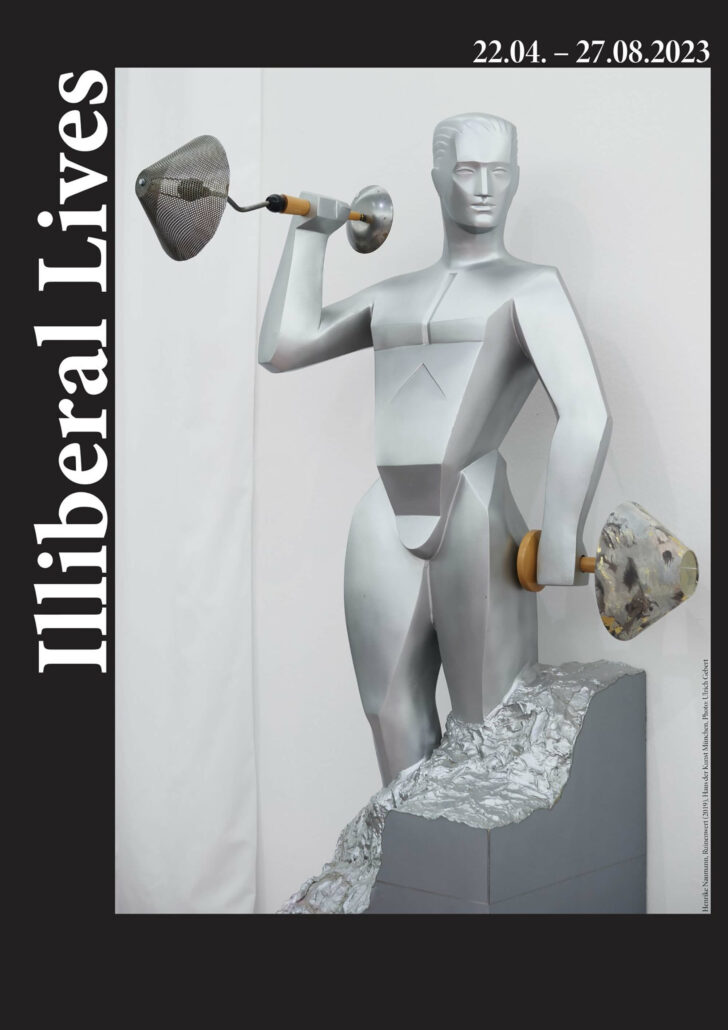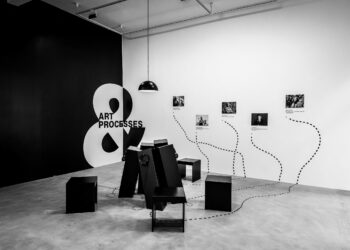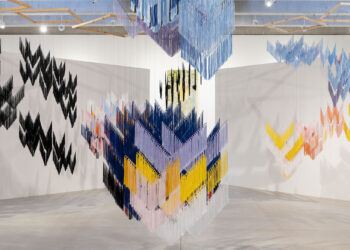The disintegration of the liberal-capitalist post-war order which seemed firmly established after 1989 also left its mark on the art of this society. This is precisely where ‘Illiberal Lives’, the current exhibition at the Ludwig Forum Aachen, inserts itself. It probes how, with the dissolution of the liberal promise of progress, the unfree, illiberal core of modern freedoms inevitably surfaces, and the liberal fiction of art as a space of expression for bourgeois freedom also comes under increasing pressure.

With Pauline Curnier Jardin, Johanna Hedva, Ho Rui An, Blaise Kirschner, Jota Mombaça, Henrike Naumann, Melika Ngombe Kolongo, Bassem Saad, Mikołaj Sobczak, and Jordan Strafer and, selected by the artists, a rehanging of works from the collections at the Ludwig Forum Aachen of Vincent Desiderio, Jann Haworth, Renato Guttuso, Jörg Immendorff, Magdalena Jetelová, Lev Kerbel, Konrad Klapheck, Lee Lozano, Klaus Paier, Andy Warhol, among others
Where art is not just defending these properties, or making itself subservient to the invocation of national communities, it is increasingly crystallising at present as a practical scene of social conflicts and exclusions. The works by Pauline Curnier Jardin, Johanna Hedva, Ho Rui An, Blaise Kirschner, Jota Mombaça, Henrike Naumann, Melika Ngombe Kolongo, Bassem Saad, Mikołaj Sobczak, and Jordan Strafer break with the constraints and violence of liberal freedoms and let artistic forms of an illiberal life take their place. The rehangings of the works from the collections at the Ludwig Forum Aachen selected by the artists, which make up part of ‘Illiberal Lives’, add seminal intensifications of the relations pasts and presents enter into to the exhibition. In their engagement with works by, for instance, Renato Guttuso, Konrad Klapheck, and Jeff Koons, works like those by Vincent Desiderio that are shown more rarely also come into view. The invited artists are always also re-situating the post-fascist history of an institution whose collections are intractably associated with the rhetoric of the bloc confrontation between East and West in the post-war period, and the liberal narrative of free and unfree art.
The presentation of five installations by Henrike Naumann in the museum’s spacious hall, into which works such as Magdalena Jetelová’s sculpture Der Setzung andere Seite and a bust of Peter Ludwig by Lev Kerbel are integrated, forms the centre of the exhibition: Naumann’s installations, in which furniture ensembles, accessories and design objects become sculptural, with video and sound works running within them, inescapably contextualise ‘Illiberal Lives’ within post-fascist Germany.
The exhibition’s other invited artists juxtapose Naumann’s embedding of central works of the Ludwig Forum in her artistic assembly of German political violence after 1989 against aesthetic formulations of communising perspectives. They are leading into forms of perception in which artistic forms of action divest themselves from national notions of the political. Mikołaj Sobczak’s depictions of protagonists of LGBTQI+-based organisation, for instance, of queer, counter-cultural milieus and resistance movements from vastly different epochs coalesce with the revolutionary gestures of the Aachen muralist Klaus Paier, with the communist Realism of Renato Guttuso’s Maggio 1968 – Giornale Murale, with Jann Haworth’s The Surfer, one of her rare life- size figurines, sewn together out of silk stockings, and with Iconostasis, a wall of icons put together out of cellophane and painted silver foil by the artist Thomas Lanigan-Schmidt, a well documented participant in New York’s Stonewall Riots in 1969.
The artists in ‘Illiberal Lives’ are pursuing communal horizons, collective forms of perception and of political spontaneities, which are erupting nowadays from the cracks in the disintegrating present. Once hierarchising the art-work above the artistic life-work (Lu Märten) is upended, the view of modern art history shifts, too, and extra-artistic historical continuities start to gain shape. Where Immendorff’s bronze sculpture Naht (Brandenburger Tor – Weltfrage), weighing tons, is embedded in Naumann’s work Das Reich, the question disappears about whether Immendorff’s work is a formal achievement: its monumentality, selection of material and excessive symbolics become the document of an artistically national self-staging symptomatic of its time, of a West German Formalism. Thus, in ‘Illiberal Lives’ the institution of art is understood not as an authentic achievement of liberal modernity, but rather as a historical form of restriction – as a containing and isolating of artistic life- works emerging from forms of lived communality that extract its surplus value.
Curated by Eva Birkenstock, Anselm Franke, Holger Otten and Kerstin Stakemeier, ‘Illiberal Lives’ is a continuation of the exhibition ‘Illiberal Arts’, which was curated by Anselm Franke and Kerstin Stakemeier at the Haus der Kulturen der Welt in Berlin in 2021. The exhibition will be on view from the 22nd of April until the 27th of August, 2023. For more information, please visit Ludwig Forum Aachen.



